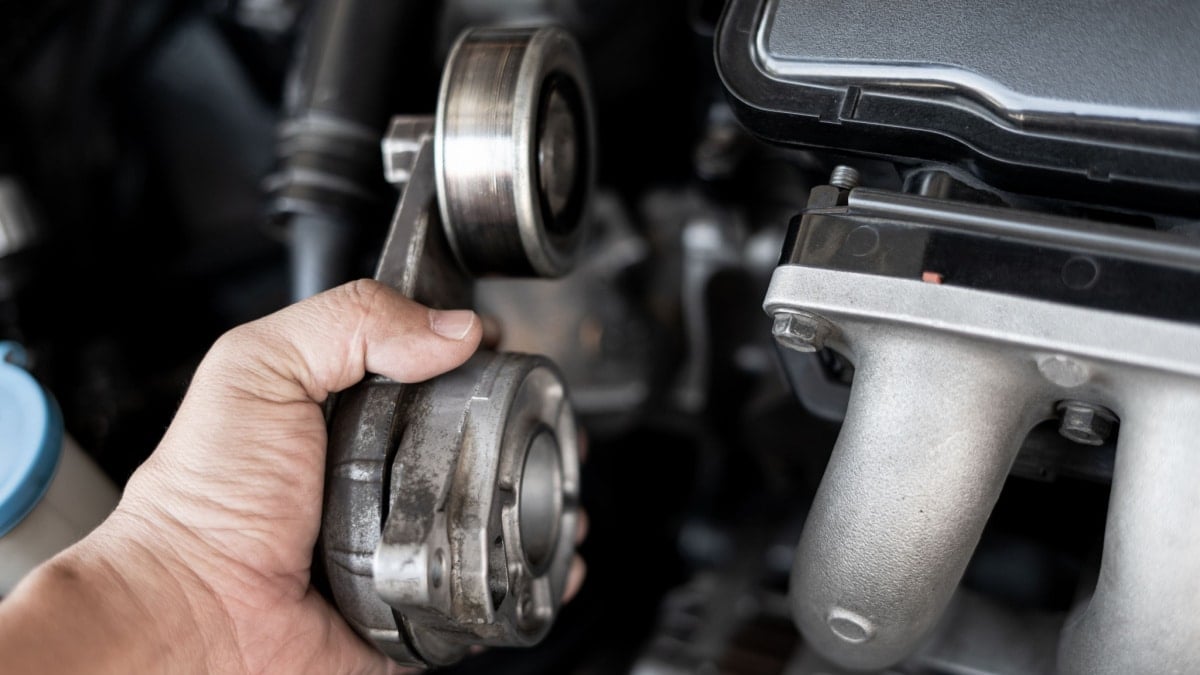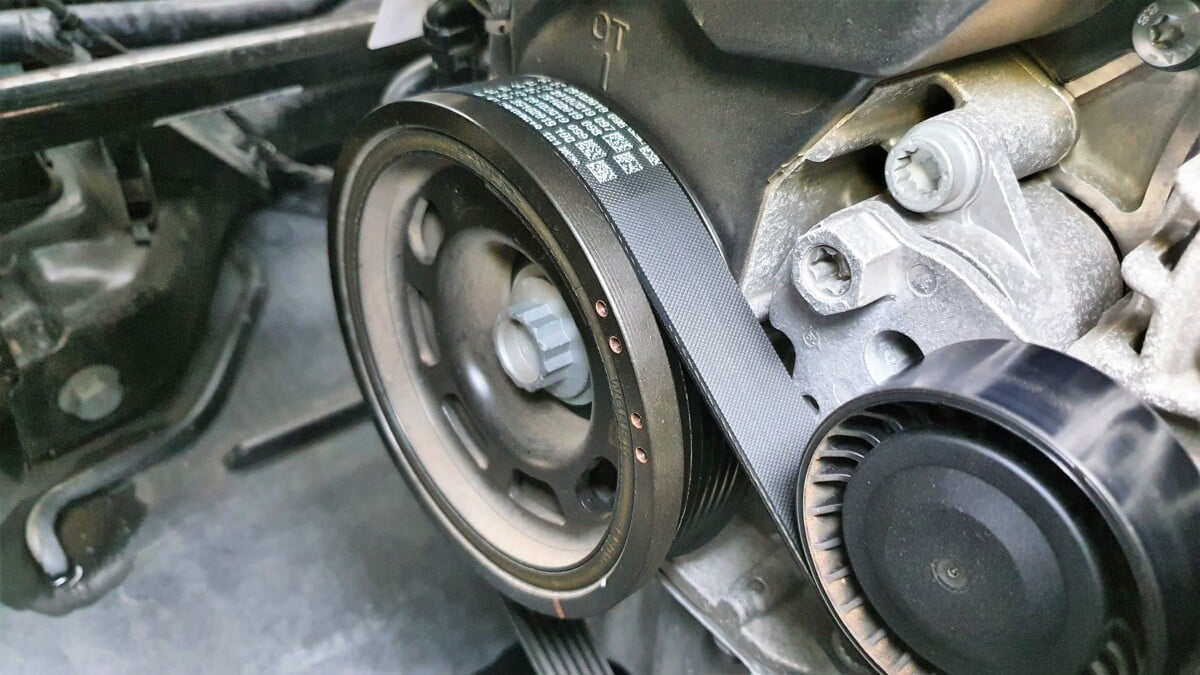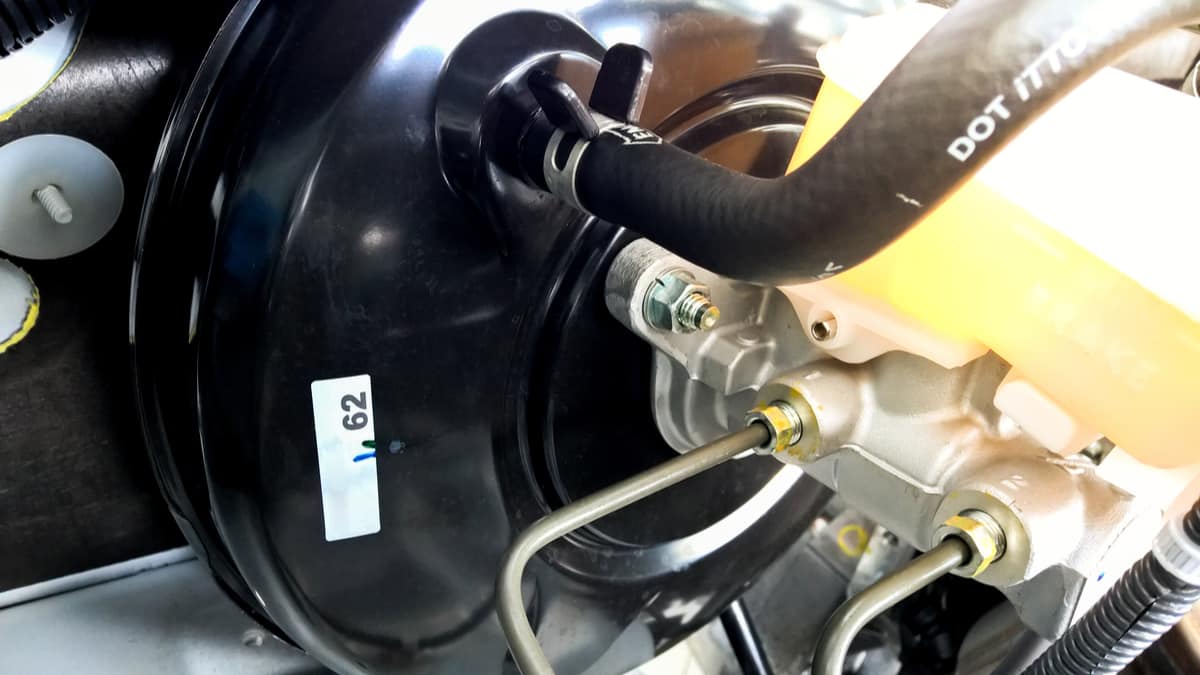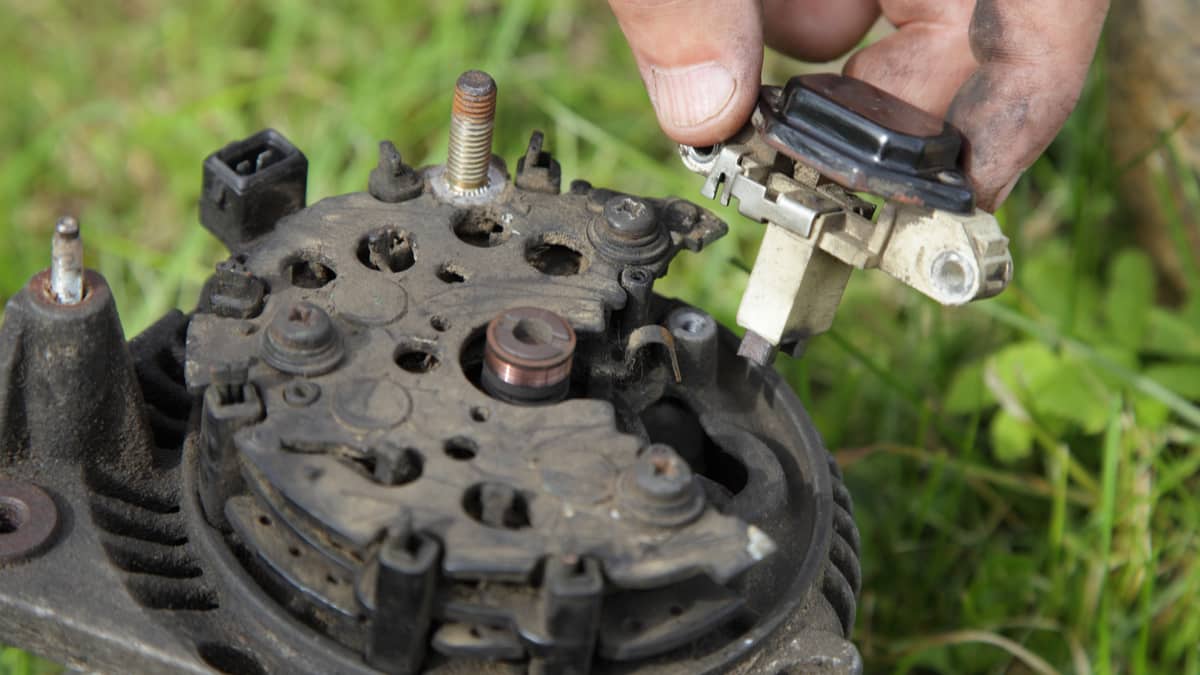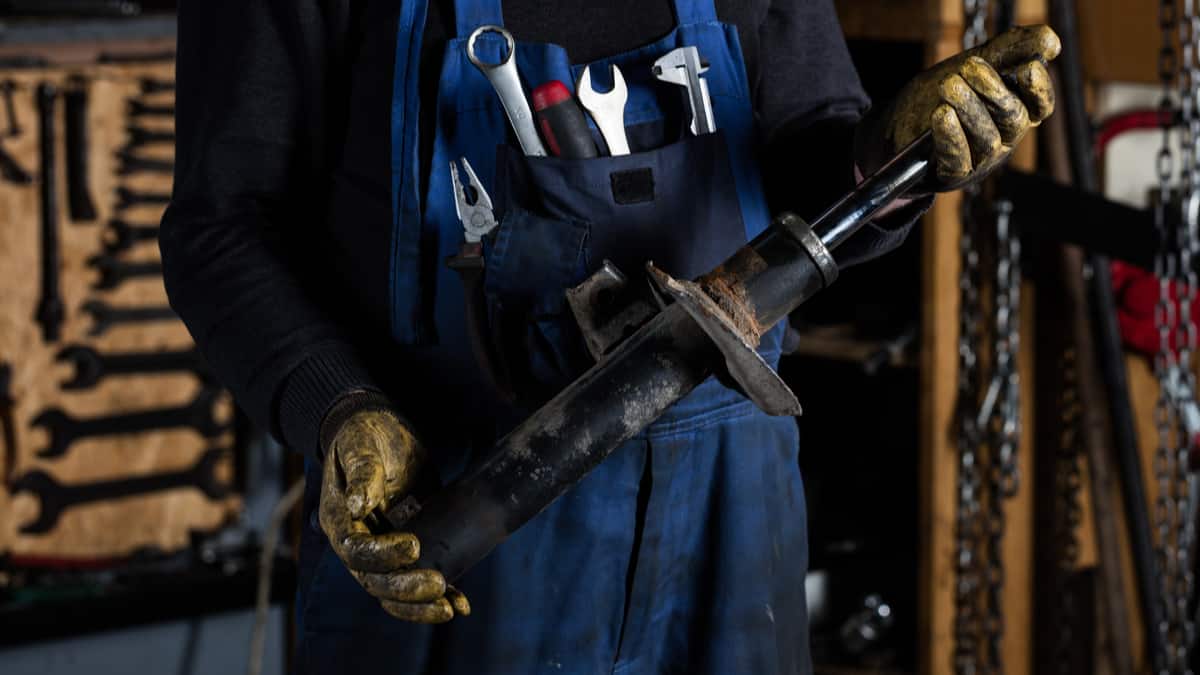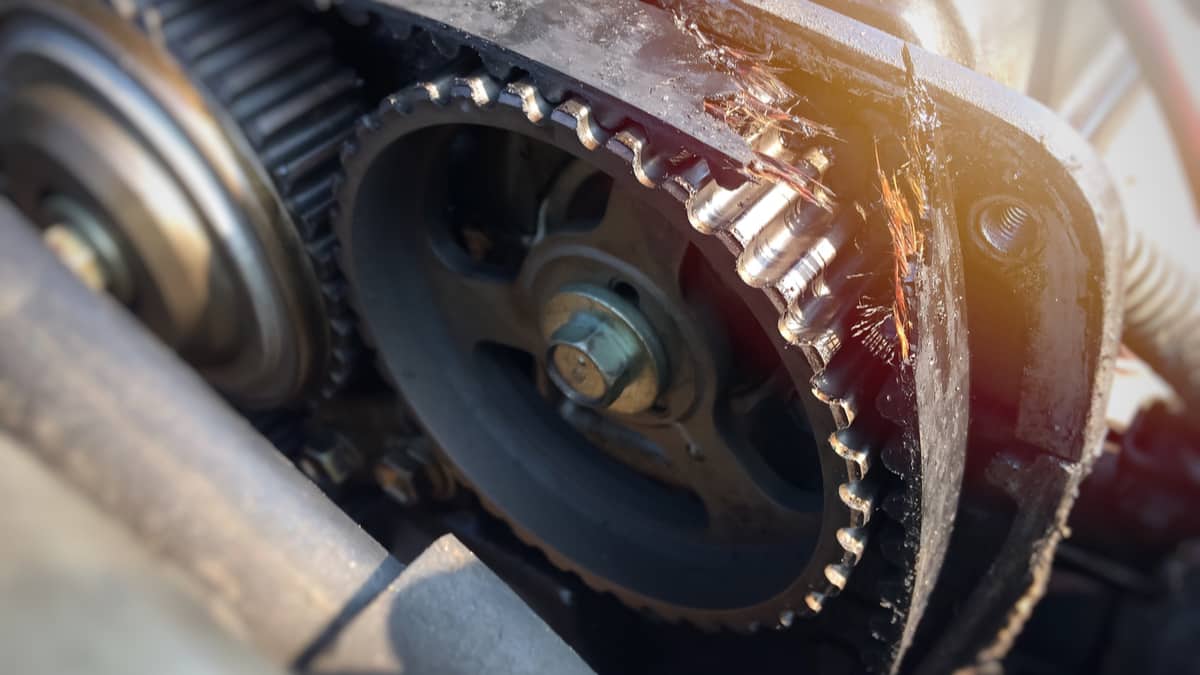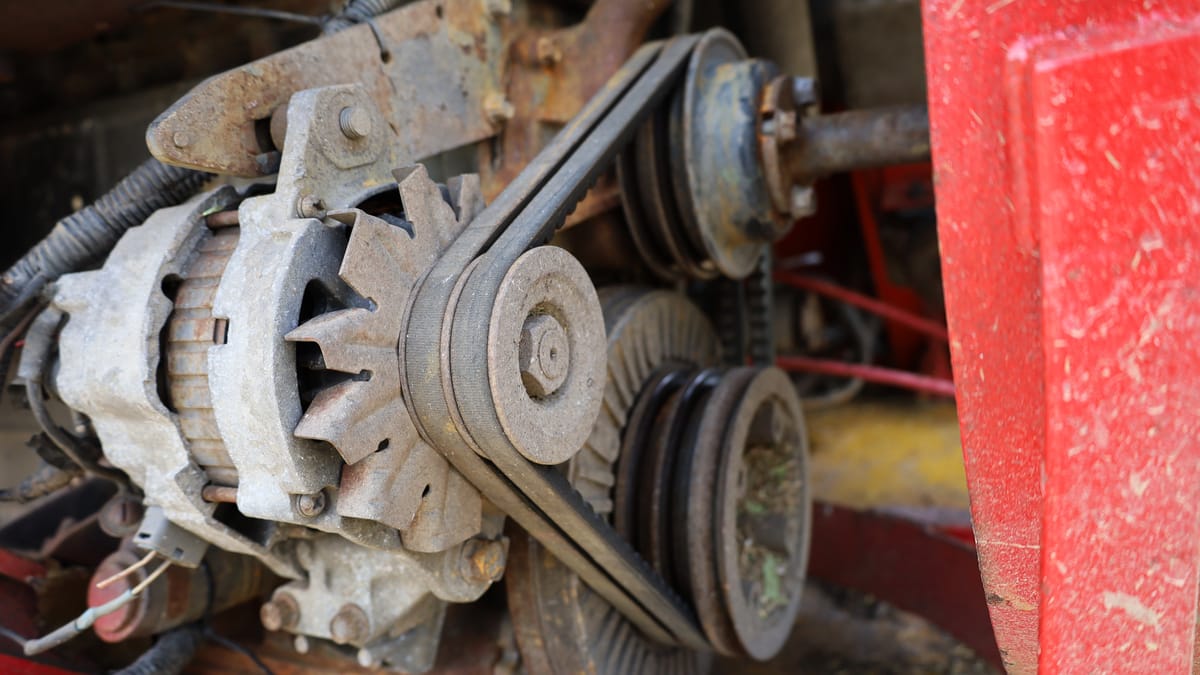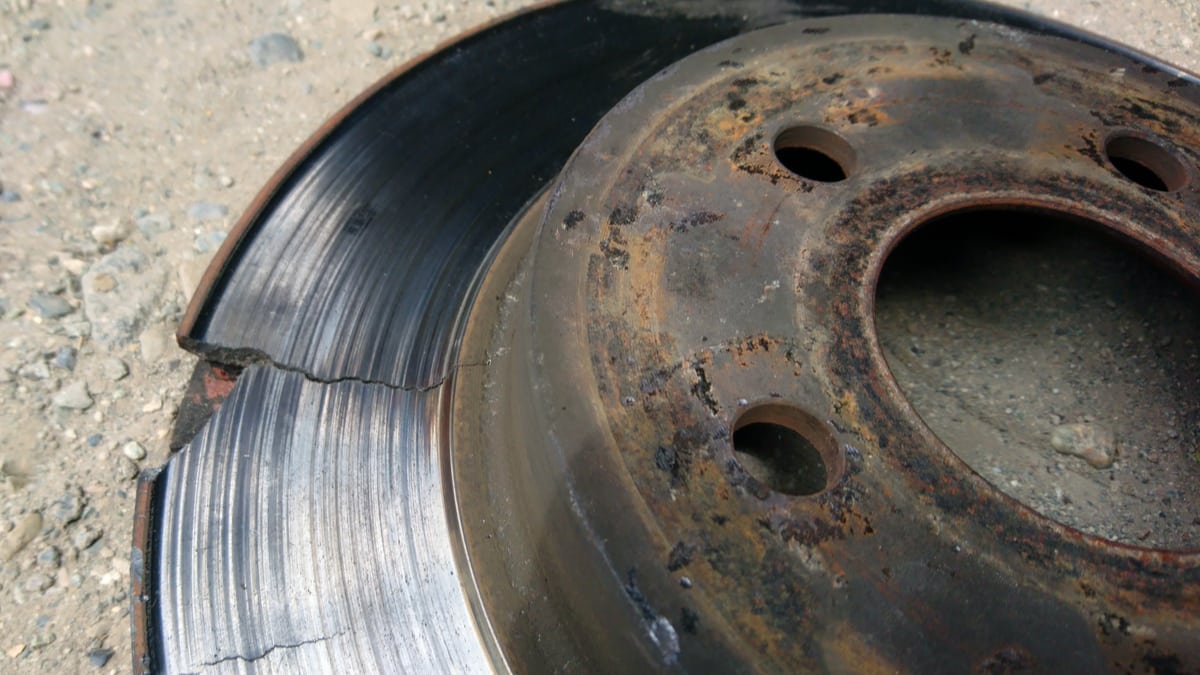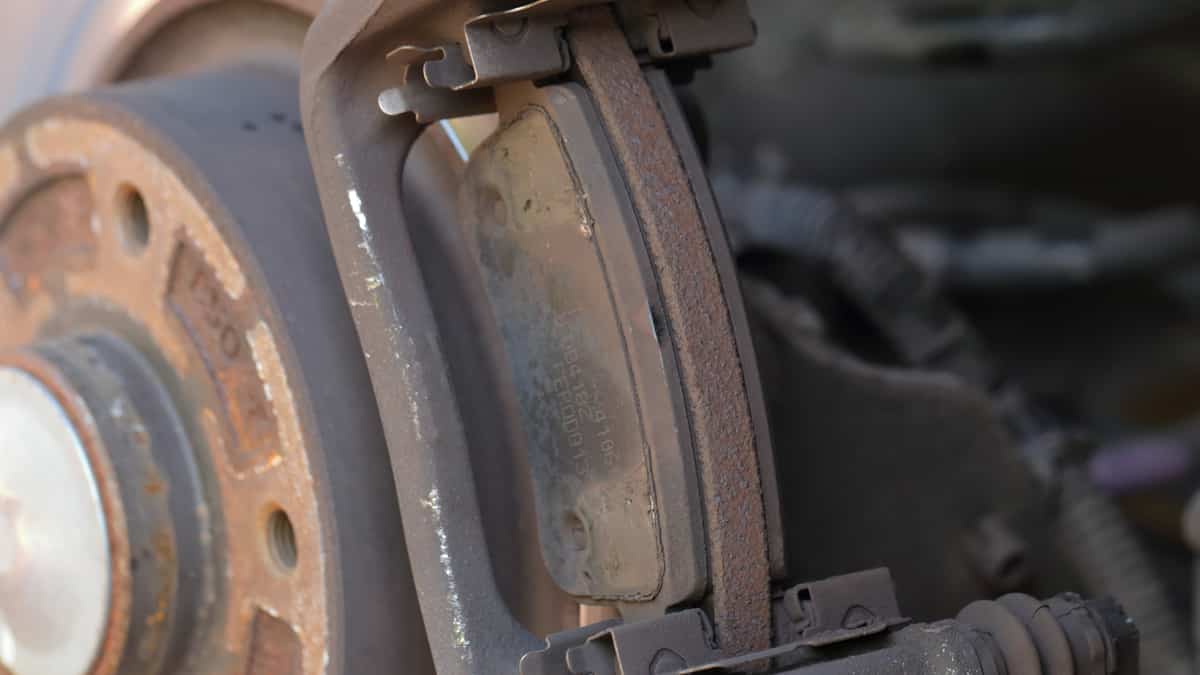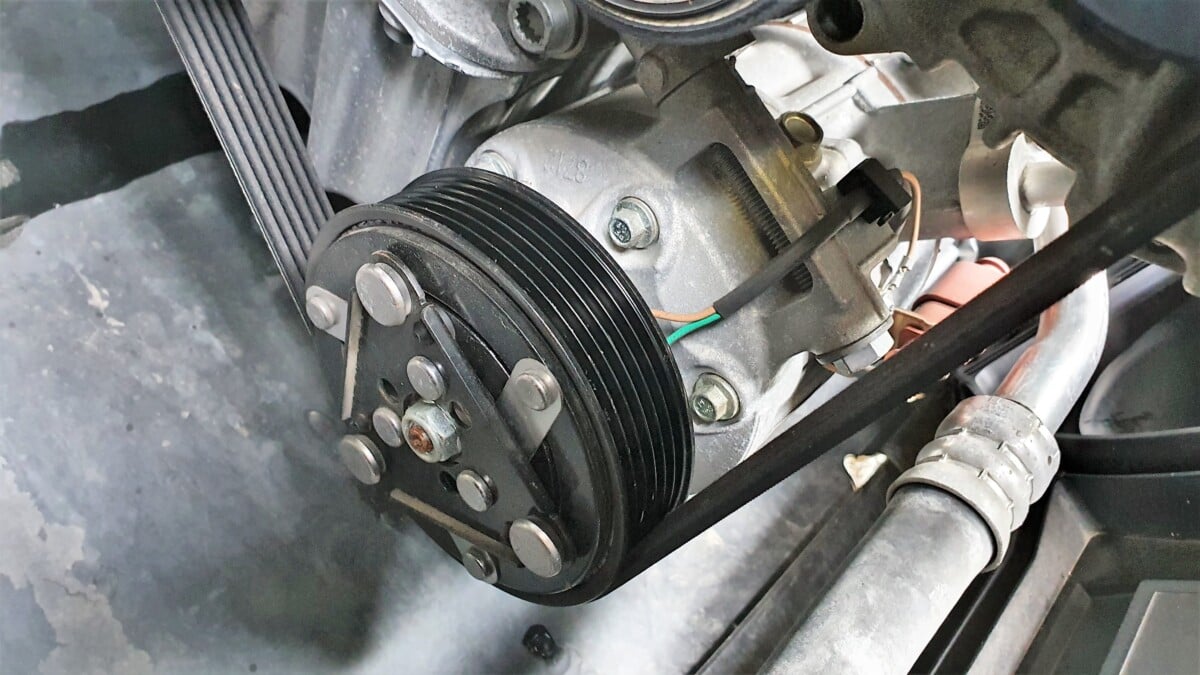To keep your car running, there is a multitude of parts that must work in conjunction with one another to ensure a smooth operation. One of these small but important parts is the tensioner pulley. Once you notice some of the symptoms of a bad tensioner pulley, you could start running into trouble.
In this article, I look closer at the symptoms a bad tensioner pulley will cause. I also touch on the location, function, and replacement cost of the tensioner pulley. If you decide to replace the tensioner pulley at home, I also take a minute to show you the steps for removal.
Symptoms Of A Bad Tensioner Pulley
A bad tensioner pulley will create a squeaking, chirping, or grinding sound. It can also lead to strange belt wear and cause accessories to fail, resulting in a burning smell. Furthermore, there could be physical signs of wear or damage to the pulley itself if you know where to look.
Here is a more detailed list of the most common symptoms of a bad tensioner pulley:
1. Strange Noises
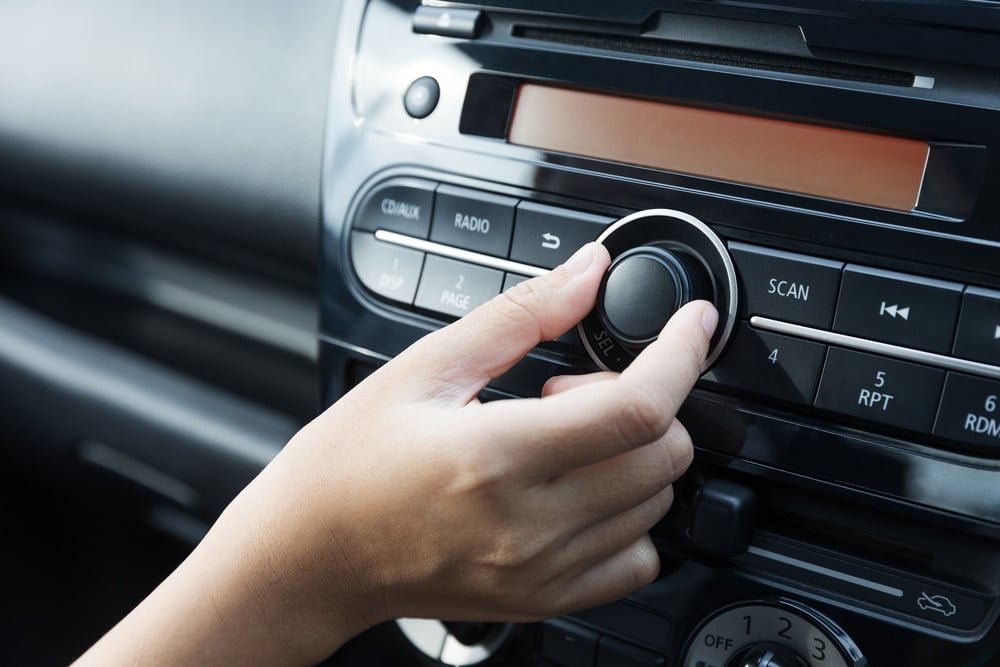
Most commonly, when the tensioner pulley starts to go bad, the noise will be the first thing that’s noticed. As the tensioner gets looser, the belts are going to make a squeaking or chirping noise. This sound might be most noticeable when you first start up the engine. It becomes quite annoying and is a top complaint among car owners.
As the bearing or pulley wears out completely, the noise will often change. At this point, the pulley can start to produce a grinding noise, which is even more alarming.
RELATED: 6 Symptoms of a Loose Alternator Belt
2. Excessive Belt Wear
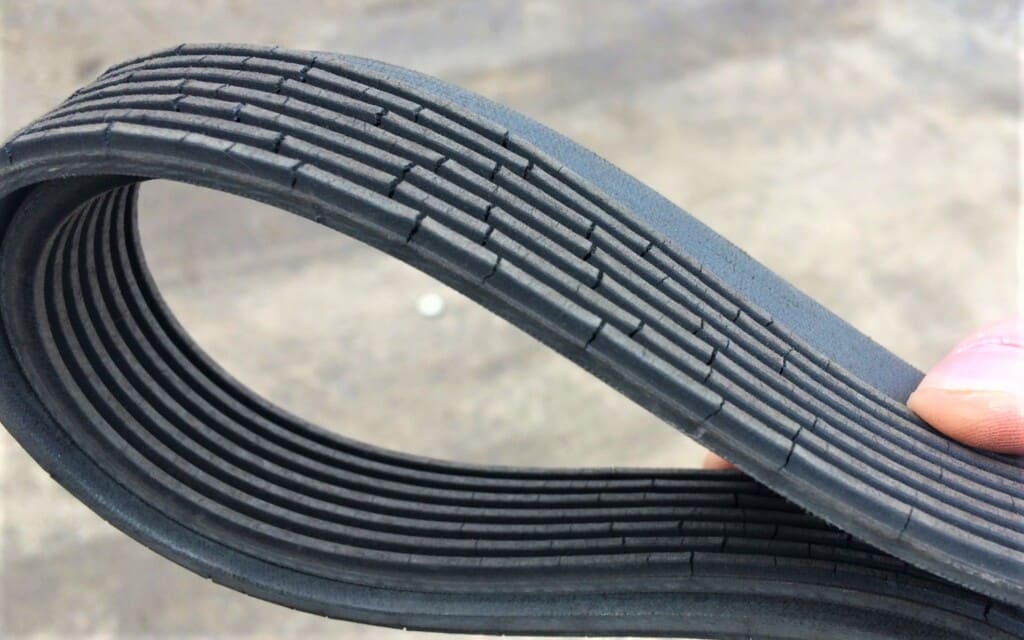
If the drive belt tensioner or pulley starts to fail, you might start to have trouble with the belt itself. You could notice some excessive or unusual wear to the belt.
With a tensioner failure, there could be issues with the pulley too. Because of this, the belt edges can start to fray. In extreme cases, you could face a broken belt, which is never good news. Ideally, you will replace the pulley before the situation gets this bad.
RELATED: 7 Symptoms of a Bad Serpentine Belt
3. Burnt Smell

If the tensioner pulley is bad and won’t tension the serpentine belt properly, it will cause the belt to loosen and begin to slip on the accessories pulleys. This can create a burning rubber smell when you drive your car.
If you notice a burnt smell, you definitely want to inspect the belt and tensioner pulley as soon as possible.
4. Failing Accessories
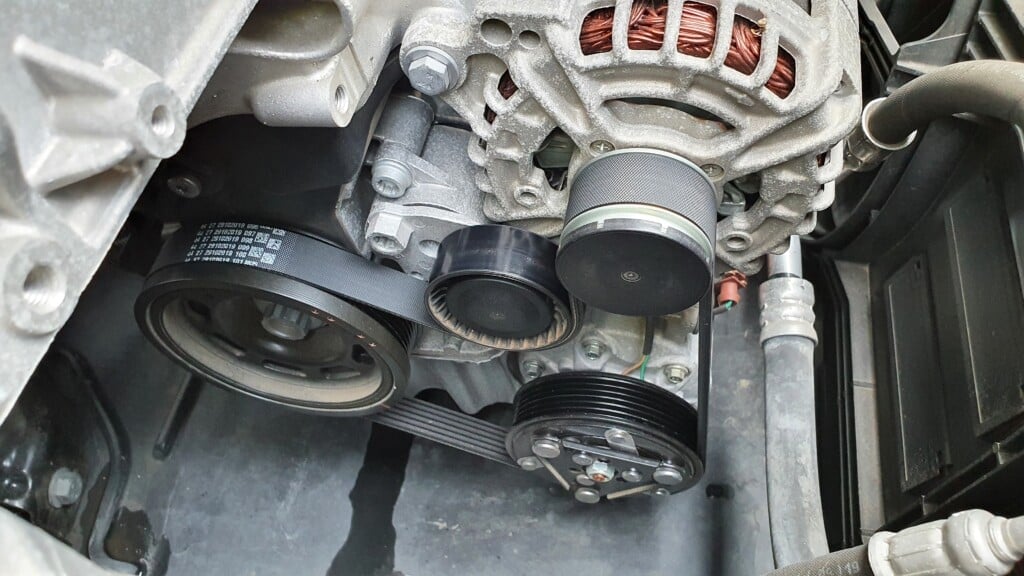
The belt is held by the tensioner and the pulley. The belt responsible for running multiple accessories. In most cars, this belt runs components such as the AC compressor, water pump, and alternator.
If the belt becomes loose or breaks, power to these parts fails. These accessories are going to become disabled, and you could start to notice strange issues. The alternator may stop charging, the engine could overheat, and the air conditioning may become disabled.
If a bad pulley or tensioner leads to a broken belt, you will have a larger repair bill. Not only will you have to replace the pulley, but also the belt and other parts that got wiped out.
5. Physical Damage
If you are mechanically inclined, you can physically inspect the tensioner pulley to see what’s going on. Once you remove the drive belt, you should be able rotate the pulley by hand. If there’s roughness, noise, or resistance to the pulley when trying to turn it, you could be looking at an issue with the bearings within.
Further examination of the tensioner pulley could reveal chips, dents or cracks. This isn’t a normal occurrence, as the new pulley would have a smooth surface. If there are any areas that are grooved, you don’t want to see any particles or debris located within. All of the high points should be equal, leaving no inconsistencies that could lead to trouble.
A physical inspection isn’t the first way to notice that there’s an issue. Instead, it should be used to strictly confirm what you already believe to be true based on the other symptoms we’ve covered. Additionally, you don’t want to start messing around under the hood to perform an inspection or replacement unless you know what you are looking at.
What Is A Tensioner Pulley?
The car engine is more complex than you might think. For the engine to run its best and produce power where it’s needed, a whole bunch of other components must work in conjunction with one another. One of these essential parts is the tensioner pulley, which isn’t talked about often.
The tensioner pulley works with the serpentine belt in today’s cars. It doesn’t matter what type of vehicle you drive – the design is going to remain the same. This pulley is required to ensure there’s enough tension on the belt while it rotates around the various accessories that it runs. The serpentine belt can run the alternator, crankshaft, water pump and AC components, so it will weave itself in and out of these parts.
The tensioner pulley maintains the right amount of pressure on the belt or chain. It must create tension to keep the belt moving as it needs to. Within the pulley, there’s often a bearing and internal hub. Most often, it’s the bearing inside the pulley that goes bad. This bearing gets mounted to the tensioner with the help of bolt. With this design, the tensioner can pivot, creating the appropriate amount of tension.
Tensioner Pulley Location

You can find the tensioner pulley at the end of the tensioner, which is spring-loaded. The accessory belt rides across the pulley, with the spring-loaded part of the assembly putting tension on the belt. It must have the right amount of tension so it doesn’t slip from the pulleys.
In some cases, the tensioner isn’t the part that goes bad. Sometimes, it’s the pulley that fails because of the bearing. For this reason, you can purchase a pulley for replacement instead of getting the tensioner. I will discuss more about that in a minute.
To find the tensioner pulley, you can follow these steps.
- Open the vehicle’s hood.
- Look across the accessory drive belt to find the tensioner. The pulley is with the tensioner and it contains a smooth surface toward the belt’s top. Where the belt rides, there will be no grooves.
If you can’t seem to find the tensioner pulley, go ahead and reference your vehicle’s service manual. Otherwise, you might need help from a local mechanic or dealership.
Tensioner Pulley Replacement Cost
On average, you might spend between $100 and $400 to have the tensioner pulley replaced. Your parts may only cost $50 to $250, while the labor could be an additional $50 to $150. If you can do the work yourself, it’s possible to save on labor costs by performing the replacement in your home garage.
You don’t want to drive with a bad tensioner pulley. It’s not going to keep working once it has hit the end of its lifespan. If more damage occurs, you could harm the accessories or engine, so it’s best to get it looked at right away.
During replacement, you also have several options. Some people suggest replacing the pulley bearings, but that can be just as much work. Additionally, there are some mechanics that believe replacing the tensioner system is the right way to go. The thinking goes that the bad pulley might have caused wear to the tensioner. If you want to be safe, this would be the right path to take, but it will add to your repair cost. However, you will know that the tensioner is in good shape instead of wondering what happened when the pulley went bad.
How to Remove the Tensioner Pulley
In most cars, it’s not difficult to remove the tensioner pulley and replace it, as long as you have the right equipment. You can find directions in your car’s service manual. Otherwise, here are a few general steps to follow.
Follow the steps listed above to locate the tensioner pulley. You will find it under the hood.
- Use a socket that matches the bolt on the pulley.
- Turn the socket counterclockwise to loosen up the bolt. If the tensioner is trying to move, you may have trouble getting the bolt loose. In this case, you must keep the tensioner in place by holding it securely with a pry bar.
- Remove the bolt in the pulley to take out the defective part.
- Carefully replace it with a new one.
If this becomes too complicated for you to complete, or you are having trouble getting the bolt loose, it’s best to visit a professional repair shop. For the cost of having it replaced, it’s not worth breaking something because of the struggle.
Can you drive with a bad tensioner pulley?
No. You shouldn’t drive with a bad tensioner pulley. If it fails completely, it can cause the serpentine belt to break causing the alternator to not charge your car battery. This will cause your car to stall and shut off.
What causes a tensioner pulley to fail?
The most common causes of a failed tensioner pulley are simply due to age, or because it was made of poor-quality material. Tensioner pulleys usually have no maintenance or scheduled maintenance in most car models, but they can still break during the life of the car.
How long does a tensioner pulley last?
Tensioner pulleys are built to last the life of the car. In most car models, there is no scheduled replacement of the tensioner pulley. They should be checked during each service and replaced if they are bad or failing.
What happens if the tensioner pulley fails?
If the tensioner pulley fails, it will cause the serpentine belt to jump or snap off. This will cause the power steering, alternator, A/C compressor, and more to stop working, depending on the car model. It can lead to serious engine damage if you are unlucky.
A failing tensioner pulley can cause the serpentine belt to slip or break, resulting in expensive engine damage. Therefore, if you suspect your car has a bad or failing tensioner pulley, have it checked yourself or by a mechanic as soon as possible to avoid engine damage.
Learn more:
